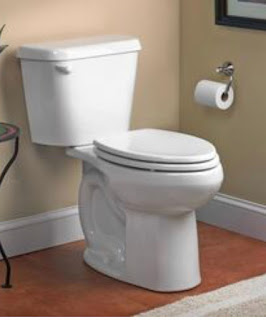SEPTIC SYSTEM 101 -- the class you've all been waiting for....
SEPTIC SYSTEMS 101
If I were still in college and needed an elective, I doubt this class would make my top 10. However, if I were a new homeowner LIVING on a septic system you can bet I would sign up! I wouldn't want to misuse the system designed to take my wastewater AWAY from my house! Join me (won't you?) for your very own "class" on septic systems!
As I have stated before in previous posts/blogs/articles, so many people don’t really know how their wastewater systems work. Because they don’t know how they work, they don’t understand simple “dos” and “don’ts” of a septic system. I totally get it! Until I got drug into this business I never pondered what happened every time I flushed. I doubt you do either. However, when it comes to your own on-site wastewater system (i.e. septic systems) if you don’t ponder it just a little bit, it can lead to big, messy, gross, disgusting, expensive problem.
Today, we will learn the basics on how a septic system functions.
The diagram above is a basic description of what happens to all the wastewater in your home. I realize the picture just attaches to two toilets, but in your typical house, ALL the water used (dishwasher, washing machine, bathtub, shower, and the toilets) drains into a septic tank. Here the water has its first treatment. Any solids (toilet paper, poo, garbage disposal items, etc.) are broken down and their remains settle to the bottom of the tank. Bacteria does a lot of work in the tank as does anaerobic respiration. After a while, the water slowly drains to the leachfield/drainfield. This is where the soil does its final treatment of all the “ick” that comes out of the house.
It’s really pretty simple – out of the house then to the tank then slowly to the drainfield. But what else? Why could I have a mess someday? What could I do to screw up this process? How do I make sure my system always works properly?
I will touch on a few items here today, but elaborate in articles to come – I gotta keep you hooked and coming back for more wastewater knowledge, don’t I?
Basic issues with septic systems that can lead to “messes” are as follows:
1) Too much water usage:
- When your system is installed, it is “sized” for your house. It’s not much different than knowing your own pants size. You know what fits and what doesn’t, right? Same is true with your home. If you are building a 4 bedroom house, it is assumed there is at least 1 person per bedroom using about 100 gallons of water a day. However, if 8 people move into this 4 bedroom house, you’re gonna have problems! It’s like trying trying to catch 20 gallons of water with a 5 gallon bucket, it just won’t work. Also, if there happens to be any water leaks in the house, the same scenario applies. Your system is sized for the number of bedrooms in your house. More water than that and you’ll see problems
2) Toilet paper/items flushed:
- You need to be very careful about what is flushed down the toilet. Items can get easily plugged or caught in the drain lines. Using cheap, single-ply toilet paper is key. Just because something says it is septic safe, doesn’t really mean it is. If water can’t break it into small pieces, don’t flush it.
3) Laterfield/leachfield/drainfield:
- Know where it is and leave it alone. Don’t drive over it, build over it, or plant anything more than grass on it. It needs to be free to evaporate water.
4) Pump tank regularly:
- Think about your septic tank like you do changing the oil on your car. It needs to be done regularly. The more people who live in the house, the more frequently you need to keep it pumped.



Comments
Post a Comment